Have you ever found yourself feeling lost when it comes to SEO?
You’ve probably heard the term before.
In reality, maybe you’re not quite sure where to get started.
We’ve all been there. There’s a lot of technical terms to take in when it comes to SEO, but it’s not as complicated as you might think. We’ve created a straightforward guide to help break down the strategies so you can gain a quick grasp of the basics.
But first… what is SEO, exactly?
The widely used acronym stands for search engine optimization, which means how to increase your website’s ranking in search engines like Google, Bing, or Yahoo. Basically, the higher your ranking the more likely you are to drive traffic to your company’s website.
For example, a potential customer searches for “printers in San Francisco”—if you’ve optimized your website for that term, your website will show up near the top of the search engine results.
Why does SEO matter for printers?
SEO is essential because it helps your business reach new customers. If people can’t find you in a web search, they might find your competitors instead.
Using SEO tactics to market your printing company website will:
- Increase quality lead traffic to your website
- Gain the credibility of ranking high in trusted search engines
- Utilize a low-cost form of marketing
- Drive more in-store traffic and sales
But don’t get me wrong, search engines can get pretty complicated—their algorithms are complex and change all the time. Instead of getting stuck on the elaborate side of SEO, let’s take a closer look at our simplified guide.
What Affects Your Search Engine Rankings?
Before we go any further, let’s go over two terms that impact where your print company’s website shows up on a search engine page.
These are referred to as on-page SEO and off-page SEO.
On-page SEO starts with your website. These are the SEO strategies you have the most control over, and they’re also the most likely tactics to bring you success.
That’s because on-page SEO starts with quality. This includes publishing amazing content and ensuring your website is user-friendly. It might come as a surprise, but factors like how fast your website loads and whether it can be easily viewed on a mobile device DO matter.
Off-page SEO refers to factors that happen outside of your website. Usually, the first thing that comes to mind is a technique called link building—where you get other websites to link back to you—but it can also refer to social media mentions, customer reviews, and article mentions.
When starting out with SEO, it’s best to take it one step at a time. We’ll concentrate on your on-page SEO strategy first.
SEO Starts With Your Content
Search engines love content. Content marketing is all the rage right now, but it’s for a good reason. The simple truth is, the most effective way to get your website ranked higher is to write fantastic content.
Create Your Content Strategy
Writing content might seem like too much work, but before you start to feel overwhelmed remember that quality is more important than quantity. While updating your website with fresh content does positively impact your ranking, it’s more important to focus on producing great content. Even if that means you just have a handful of blog posts published—or other forms of media like infographics and video.
Remember, your content should be useful to your audience. What types of questions do your customers frequently ask? How can you educate them?
Here are a few ideas we’ve used on Printer Success:
- 5 Most Common Typography Mistakes You Should Avoid
- 3 Things Every Effective Brochure Should Do
- How to Make Your Envelopes Stand Out
If you’re struggling to identify what topics your audience wants to read, keyword research can help you out.
How to Complete Keyword Research
Google Keyword Planner (a free keyword research tool) is the best place to start. To use this tool, all you need to do it set up a Google AdWords account. Once you log into your account, click on the tools button to find the Keyword Planner.
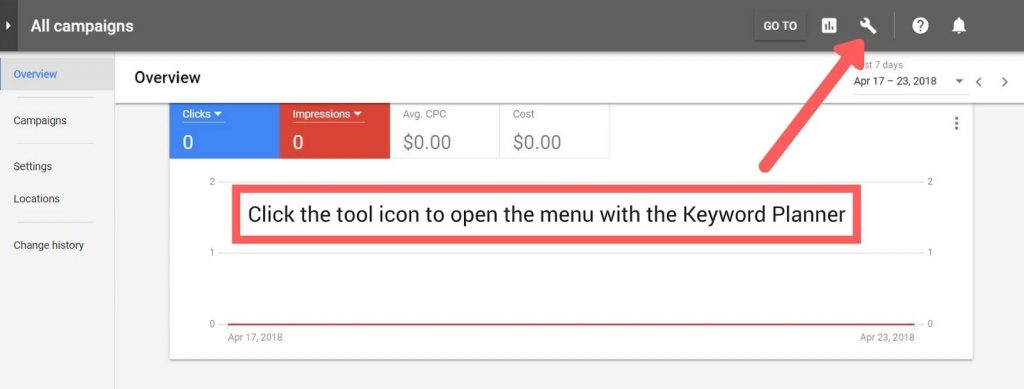
After you open the menu, you’ll notice the link to the Keyword Planner on the left menu.
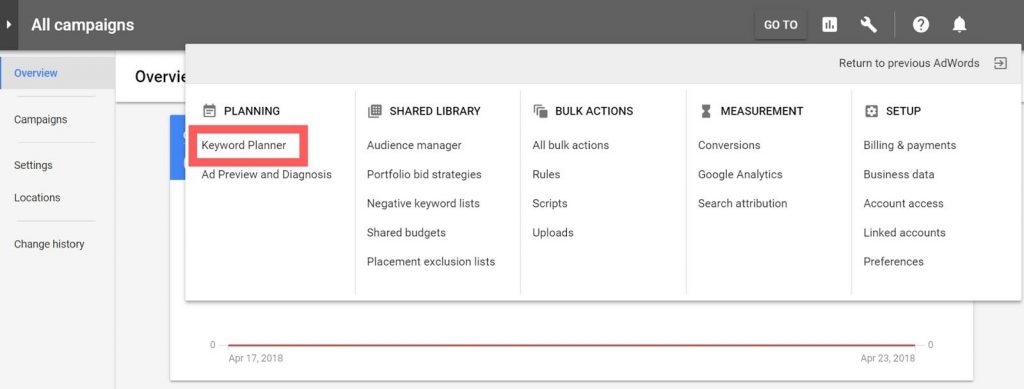
Now you can look up terms your potential print buyers might be searching for.
Let’s use one of the previous topics as an example, like typography. Here’s what shows up when we plug in “best fonts for 5 Most Common Typography Mistakes You Should Avoid” into the search.
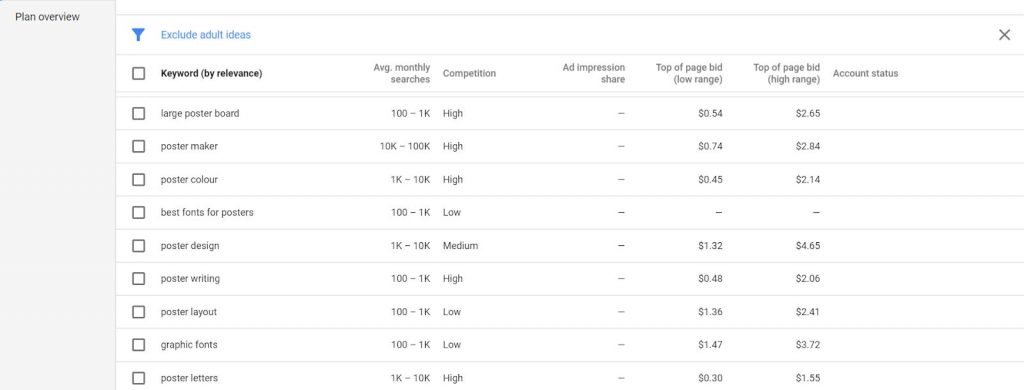
You’ll see a list of potential keywords, how competitive they are, and a range of average monthly searches.
Ideally, you want to go after low and medium competition keywords with a decent amount of searches per month. 10-100 searches probably aren’t enough, but at least 1,000 searches is a good range to start. The longer the keyword, the less likely there is to have high competition. These are referred to as “long-tail keywords” in SEO.
In this example, you can see “best fonts for posters” has between 1,000-10,000 searches per month and low competition. That means you’ll have a good chance of ranking for that keyword when your reader searches for that term.
Back in the day, some marketers frequently used a techniques called “keyword stuffing” where they tried to load a webpage with as many keywords as possible. This is a strategy you want to AVOID today because Google actually penalizes websites that do this. (Plus, it makes your content sound really weird!)
Instead, we recommend writing your content like you normally would. Afterward, you can review your content and find places to insert keywords naturally.
Take Advantage of Local SEO and Long-Tail Keywords
Since you’re a small business that provides printing services, local SEO is a must-have. You can use the Google Keyword Planner to search for local keywords, but another way to do this is to use Google search itself.
We’ll use “best printers in San Francisco” to demonstrate how to do this. When you plug that into Google, you’ll see paid advertising results first.
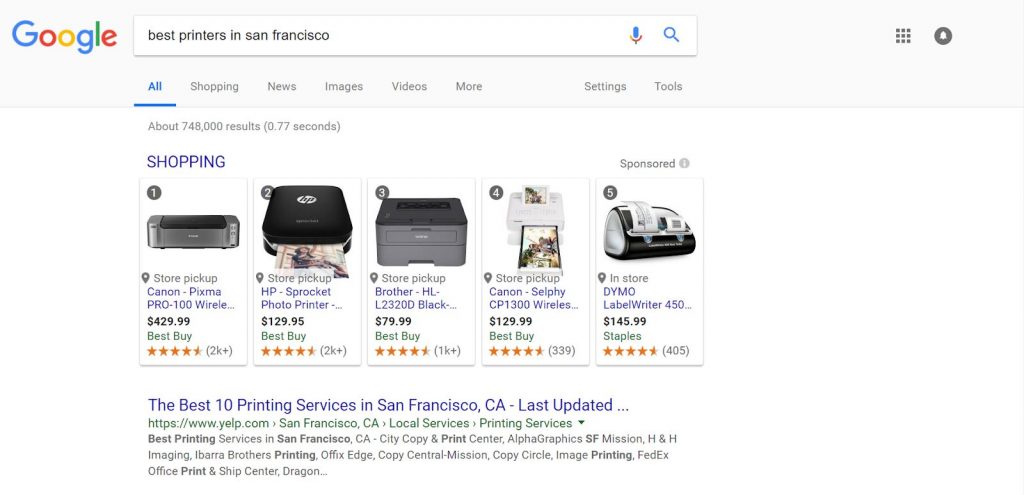
Don’t worry about those right now.
When you scroll down, you’re given some options for local printing services. The first several results are round up lists from Yelp, but once you get further down the page you’ll notice a couple of local companies ranking for that search term—Autumn Express and AlphaGraphics.
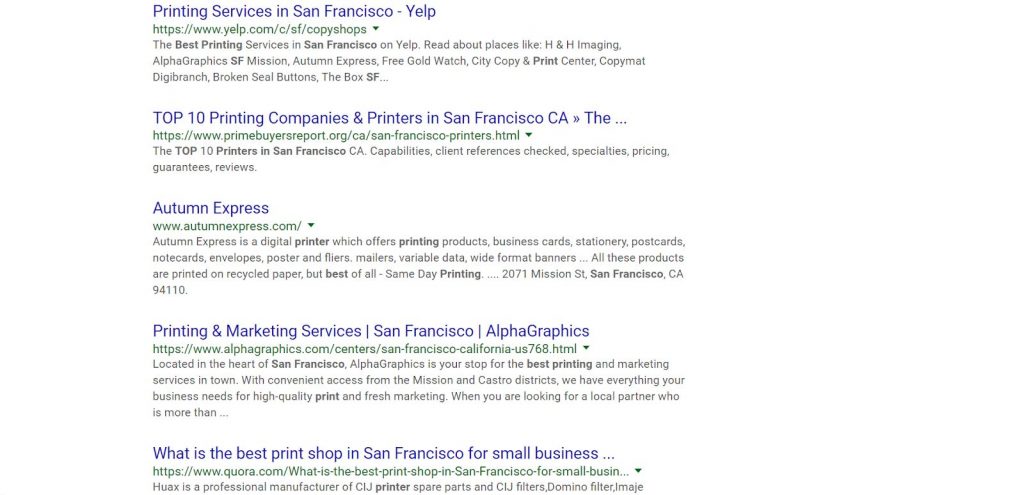
If you scroll down to the bottom of the page, you’ll also notice Google suggests terms that are commonly used in similar searches.
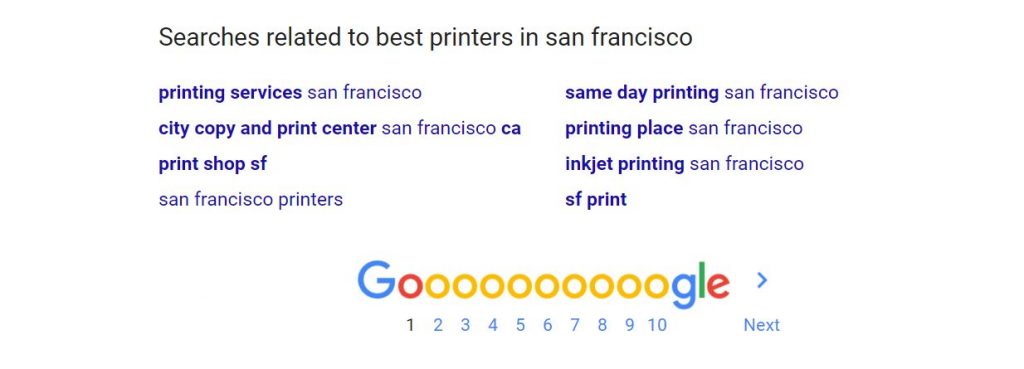
These are awesome options for finding long-tail keywords to target because it means your audience has already been looking up these phrases.
And remember, you don’t want to spend too much time trying to fit the EXACT keyword onto your website. The algorithms are sophisticated enough to figure out related words and search terms.
Just focus on providing value to your target audience first. This is the ultimate method for boosting your website’s SEO.
In Conclusion
SEO strategies are complex, but you can begin implementing easy strategies to boost your website search rankings. Use Google’s free tools to find out what content your audience craves and spend time on creating that high-quality content for them.
It’s important to keep in mind that SEO does take time. The search engine results won’t be immediate, but trust that optimizing your printer website is worth it in the end.
Check this: Levitra: A Comprehensive Guide to its Use and Benefits

















What a great article. Thank you for spending time to write this.
Probably, this is one of the most accurate and step-by-step guide I’ve read on this topic.
Really informative, thanks for sharing this!
A lot of information has already been posted! I will share this with other as well. Looking forward for more great information! Thanks a lot!
Thanks for checking out our article! We look forward to providing more helpful articles.